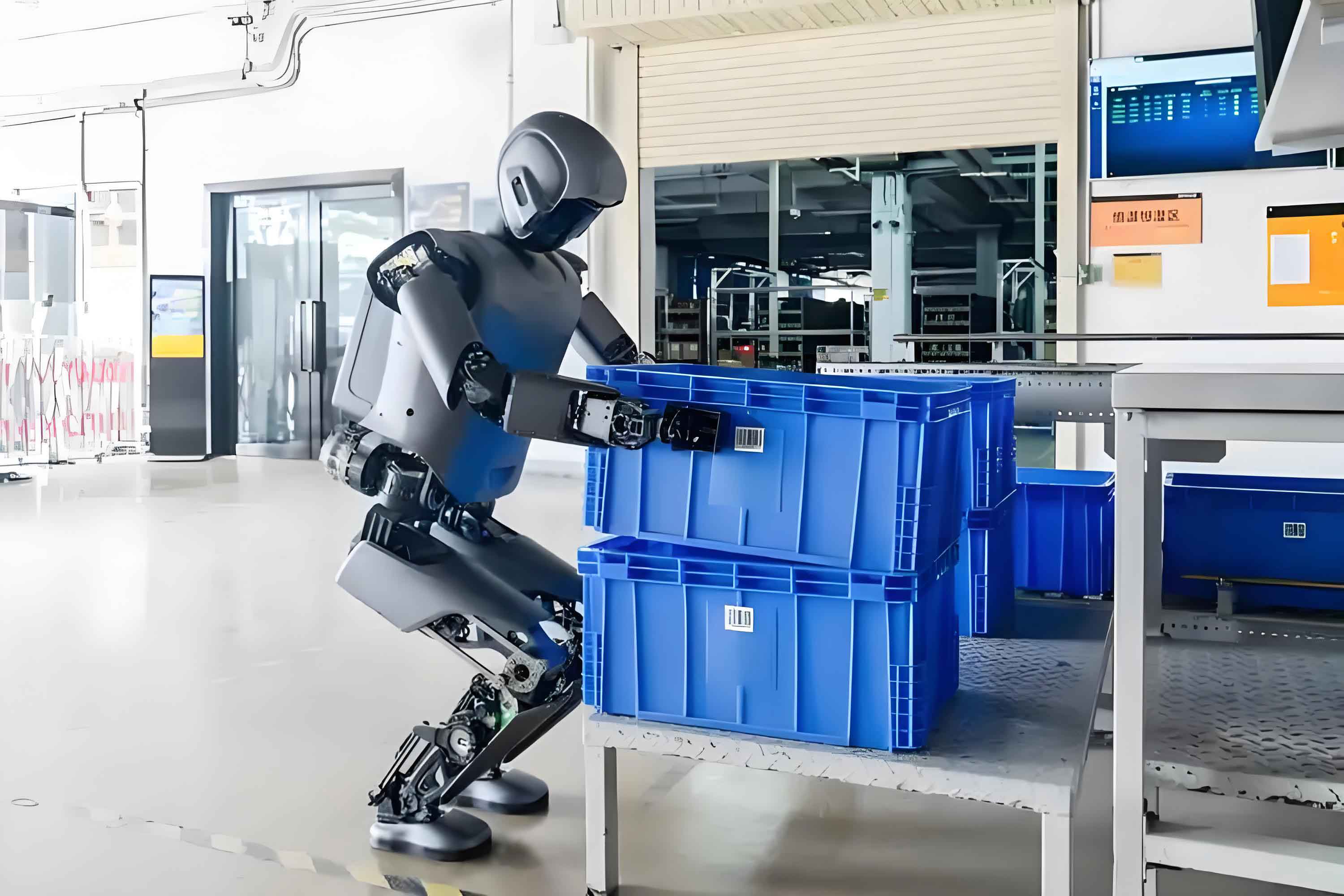
Hebei Province has demonstrated remarkable momentum in its robot industry, achieving revenue of 14.64 billion yuan in 2024—a 42.3% year-on-year increase. This marks the second consecutive year of growth exceeding 40%, positioning the region as a significant player in China’s advanced manufacturing landscape. As a traditional industrial powerhouse, Hebei leverages its manufacturing strengths and diverse application scenarios to cultivate distinctive robotic products, fostering industrial agglomeration and driving high-quality development through technological innovation and strategic expansion.
1. Cultivating Leaders and Nurturing SMEs: Steady Growth in the Robot Industry
The robot industry in Hebei thrives on the synergy between established enterprises and emerging innovators. Kaicheng Intelligent Equipment Co., Ltd., located in Tangshan High-tech Zone, exemplifies this progress. The company recently added an advanced spraying robot to its portfolio, designed for mining operations. Its extensive product lineup includes firefighting robots capable of ejecting 40–200 liters of water per second with centimeter-level outdoor positioning, mining robots for underground inspections and material handling, and underwater robots operable at depths of 300 meters. Since pioneering China’s first explosion-proof mining rescue robot in the early 2000s, Kaicheng Intelligent has expanded to over 130 specialized robotic products, securing its position in China’s top tier of special-purpose robotics and earning recognition as a national manufacturing champion in 2024.
Similarly, Tangshan Kaiyuan Electric Group Co., Ltd., another key player in Tangshan, has established itself as China’s largest welding and cutting equipment consortium, offering comprehensive robotic welding solutions. Beyond system integrators, breakthroughs in core components are propelling the robot industry forward. Hebei Zhikun Precision Transmission Technology Co., Ltd., based in Shijiazhuang, tackled the critical challenge of reducing dependence on imported robot “joints”—high-precision reducers. The company developed domestically produced reducers matching international standards, achieving mass production and aiming to build a manufacturing base with an annual capacity of 1 million units.
To support small and medium-sized enterprises (SMEs) facing high entry barriers, Tangshan Baichuan Robot Shared Factory provides a collaborative ecosystem. This platform offers tailored services in technology, procurement, and logistics, enabling SMEs to accelerate development without heavy capital investment. By the end of 2024, Hebei hosted 369 robot-related enterprises, including 29 with annual revenues exceeding 100 million yuan, with the robot industry now spanning all prefecture-level cities.
2. Building Platforms to Promote Transformation: Beijing-Tianjin-Hebei Collaboration Extends the Robot Industry Chain
Regional cooperation is integral to strengthening the robot industry. The Beijing-Tianjin-Hebei robot industry chain, prioritized under the “Six Chains, Five Clusters” industrial synergy framework, has yielded tangible results. The Hebei Tangshan·Zhongguancun Robot Industry Innovation Center, a collaboration between Zhongguancun Robot Industry Innovation Center and Tangshan High-tech Zone, exemplifies this. By curating scientific advancements from across the region, the center identifies applications for Hebei’s traditional sectors like steel, chemicals, and ceramics. It has gathered demands from over 90 enterprises, facilitating projects such as the robotic drilling production line at Golden Stone Drilling (Tangshan) Co., Ltd., which enhanced efficiency and safety.
Hebei actively hosts platforms like the National Robot and Intelligent Manufacturing Achievement Transformation Public Service Platform’s Hebei branch to incubate innovations. These initiatives publish application demands and organize events like the Xiong’an International Service Robot Competition to attract Beijing-Tianjin technologies. For instance, Beijing Chunlizhengda Medical Instruments Co., Ltd. addressed orthopedic surgical navigation robot needs for Hebei Medical University’s Third Hospital, while Zhongguancun’s robot center resolved automatic concrete sampling challenges for Jinyu Concrete Group.
The collaboration is attracting enterprises like Mech-Mind (“AI+3D vision”), Eyecloud Technology (“AI+biometrics”), Pulong Technology (smart inspection robots), and Fuxi Jiuzhen (intelligent infusion robots) to establish operations in Hebei. Future plans include relocating Beijing-based core component manufacturers and service providers to Hebei, upgrading key hubs like Tangshan and Shijiazhuang High-tech Zones, and co-developing the Beijing-Tianjin-Hebei Robot+ Industrial Park.
3. From Factories to Kitchens: Robots Becoming Trendsetters Across Sectors
The robot industry’s expansion into diverse fields is unlocking transformative potential through the “Robot+” initiative. In industrial settings, robots drive efficiency gains. At Shijiazhuang No.4 Pharmaceutical Group, 15 industrial robots handle 400 bags/bottles of injections per minute on production lines. Similarly, at China Construction Road and Bridge Group’s Shitai Expressway renovation site, automated welding robots perform standardized tasks in steel processing plants.
Hebei’s government is systematically advancing the “Robot+” strategy, identifying ten key sectors—including agriculture, construction, energy, logistics, and healthcare—for robotic integration. Supply-demand matchmaking events spotlight successful use cases, demonstrating how robots transcend factory floors. In Tangshan’s youth apartments, cooking robots prepare dishes from eight major Chinese cuisines. At Qinhuangdao’s Furuikang Elderly Care Center, residents use massage robots developed by Aubo (Qinhuangdao) Robotics Co., Ltd.
To sustain momentum, Hebei maintains a robot project database and promotes “robotization” upgrades. Initiatives like Tongrun Power’s intelligent inspection robots and Yaozu Metal Products’ ultra-precision laser welding robots have secured national technological renovation loans, underscoring the robot industry’s robust growth trajectory.
